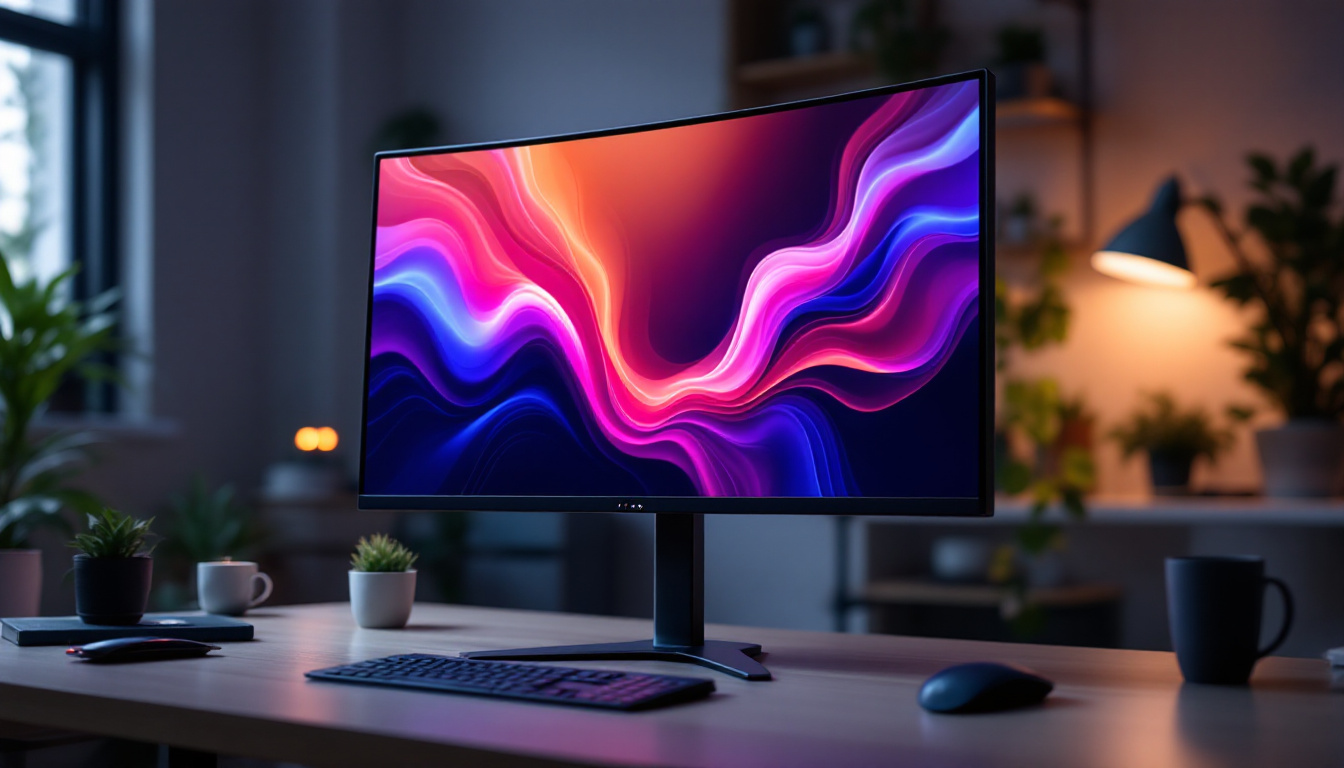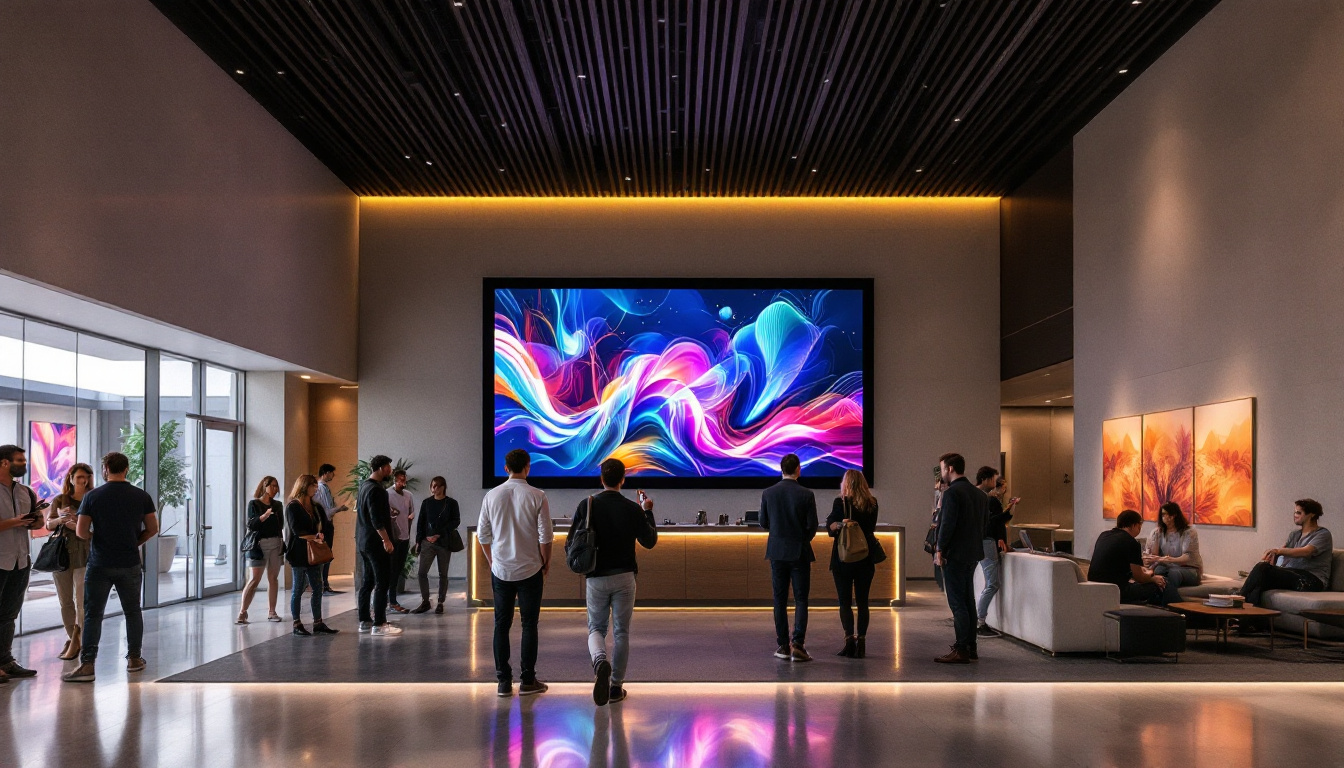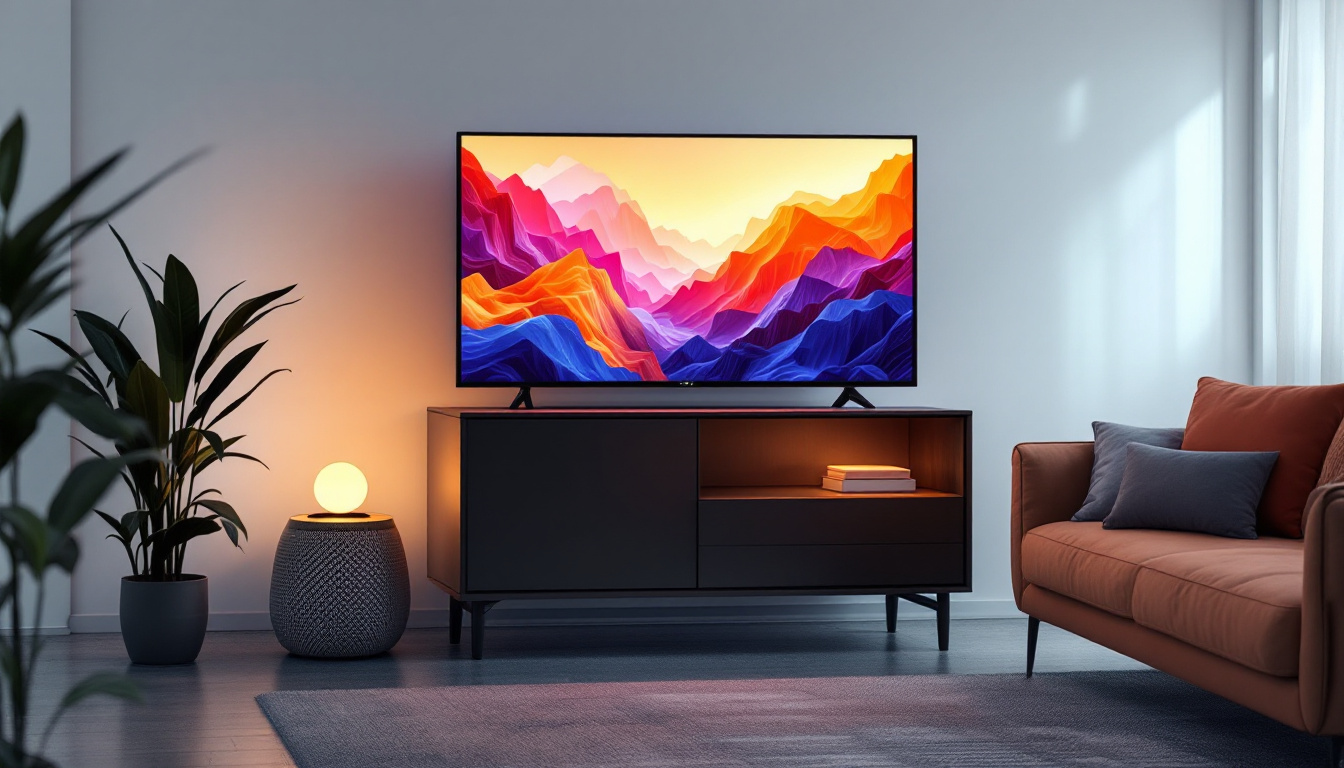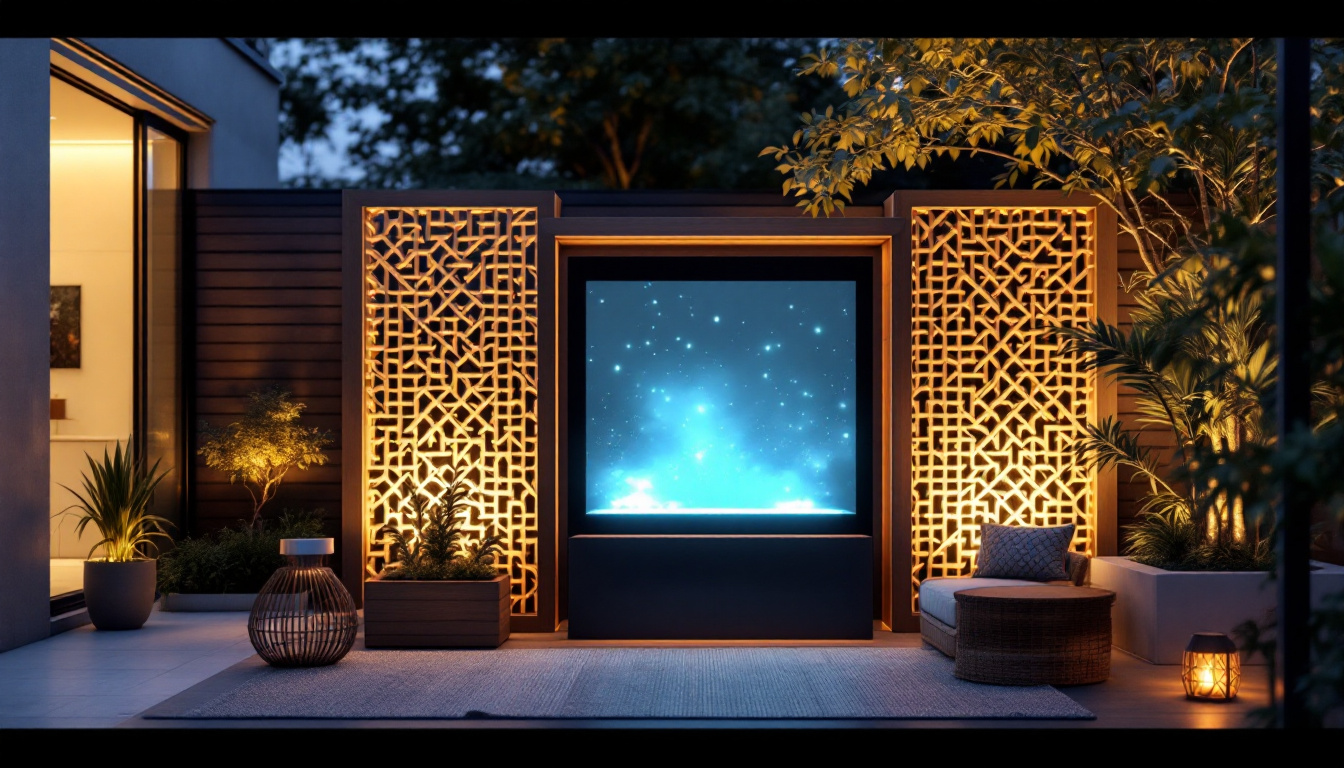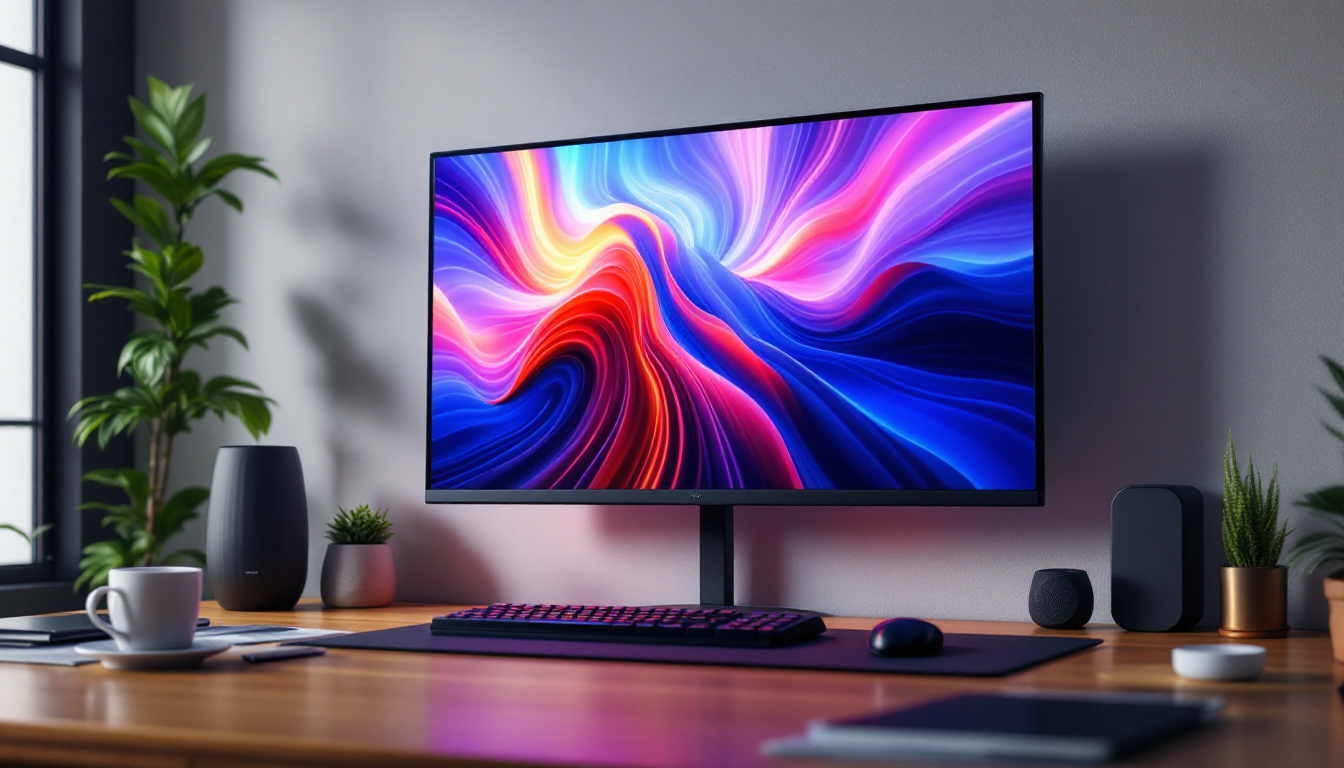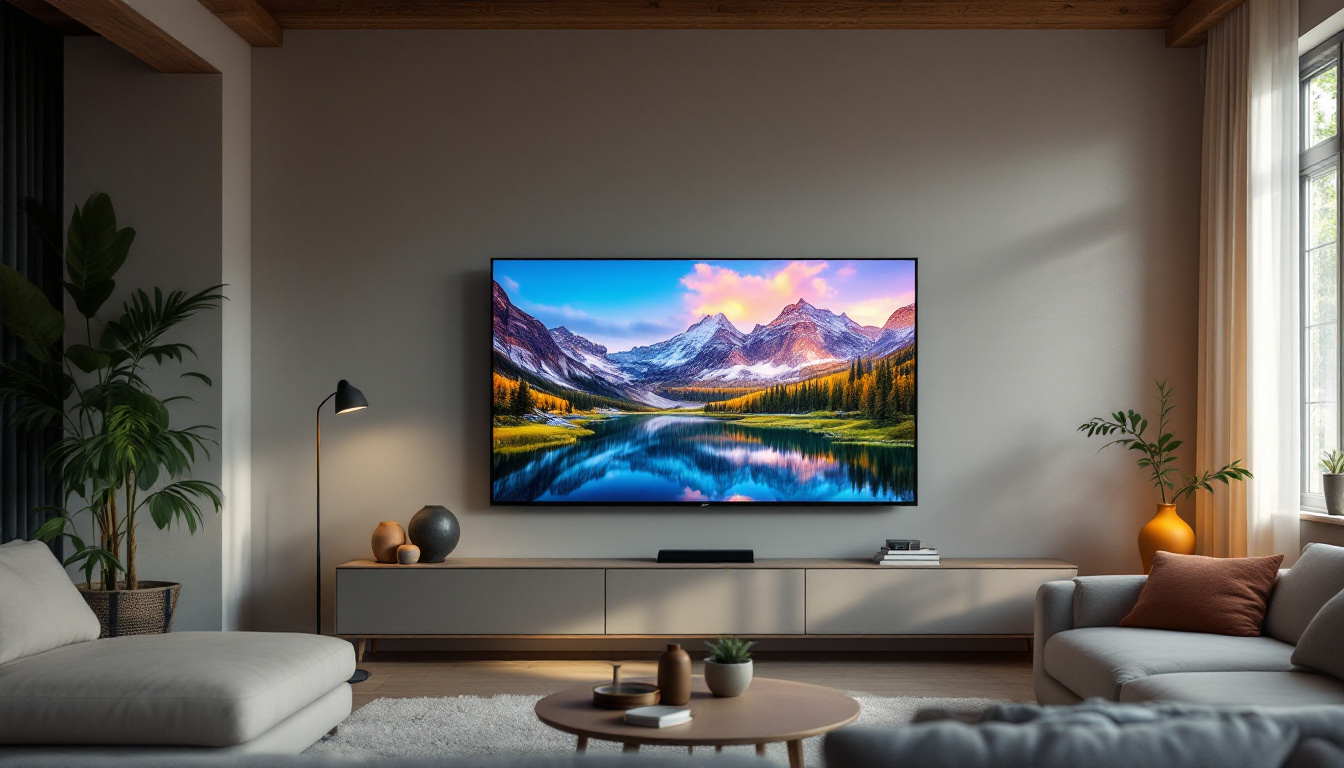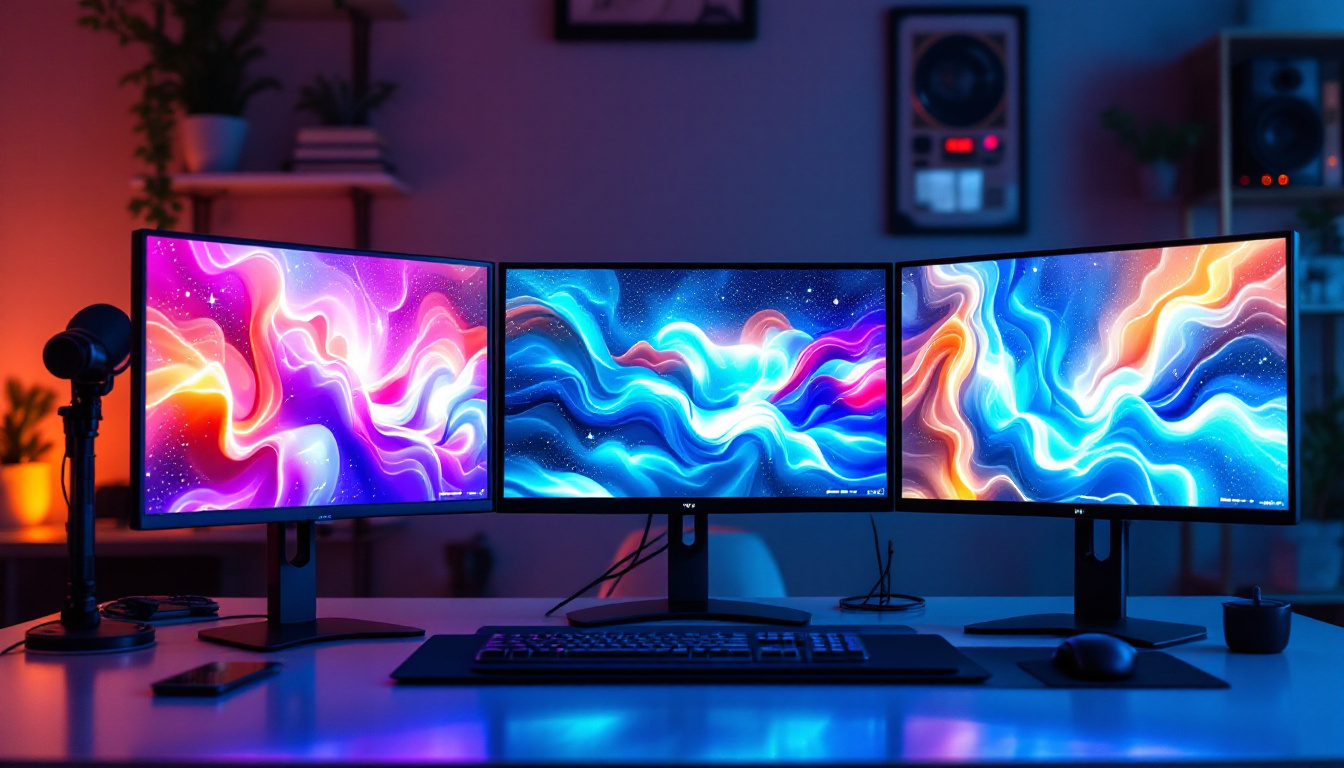DisplayPort 1.4A: LED Display Explained
In the ever-evolving world of display technology, the DisplayPort 1.4A standard has emerged as a significant player, particularly for LED displays. This article delves into the intricacies of DisplayPort 1.4A, its features, and how it enhances the performance of LED displays. Understanding this technology is crucial for anyone looking to maximize their visual experience, whether for gaming, professional work, or casual viewing.
Understanding DisplayPort Technology
DisplayPort is a digital display interface developed by the VESA (Video Electronics Standards Association). It is designed to connect a video source to a display device, such as a computer monitor or television. The technology has evolved over the years, with various versions introducing new capabilities and improvements.
Key Features of DisplayPort 1.4A
DisplayPort 1.4A builds upon its predecessors by offering several advanced features. One of the most notable enhancements is the support for higher resolutions and refresh rates. With a bandwidth of up to 32.4 Gbps, it can handle 8K video at 60Hz with HDR, making it ideal for high-end gaming and professional applications.
Additionally, DisplayPort 1.4A supports Display Stream Compression (DSC), which allows for lossless compression of video streams. This feature enables users to enjoy high-resolution content without sacrificing quality, even when using lower-bandwidth connections. The implementation of DSC is particularly beneficial in scenarios where high fidelity is paramount, such as in graphic design, video editing, and immersive gaming experiences where every detail counts.
Compatibility and Connectivity
Another advantage of DisplayPort 1.4A is its backward compatibility with previous DisplayPort versions. This means that users can connect devices using older standards without any issues. Furthermore, DisplayPort 1.4A supports multiple display connections through Multi-Stream Transport (MST), allowing users to daisy-chain multiple monitors from a single output. This capability is especially useful for professionals who require expansive screen real estate for multitasking, as it enables seamless integration of multiple displays without cluttering the workspace with numerous cables.
For those concerned about connectivity, DisplayPort 1.4A also supports USB-C connections, making it versatile for modern devices. This integration simplifies the connection process, especially for laptops and mobile devices that utilize USB-C ports. The dual functionality of USB-C as both a power and data connector means that users can enjoy a streamlined setup without the need for multiple cables. Moreover, the versatility of USB-C allows for enhanced compatibility with a wide range of devices, from smartphones to high-end laptops, making DisplayPort 1.4A a future-proof choice for users looking to invest in their technology ecosystem.
The Impact of DisplayPort 1.4A on LED Displays
LED displays have become increasingly popular due to their vibrant colors, energy efficiency, and slim profiles. The integration of DisplayPort 1.4A technology significantly enhances the performance of these displays, providing users with an improved visual experience.
Enhanced Color Depth and HDR Support
One of the standout features of DisplayPort 1.4A is its support for High Dynamic Range (HDR) content. HDR technology enables displays to produce a wider range of colors and brightness levels, resulting in more lifelike images. With DisplayPort 1.4A, LED displays can take full advantage of HDR, offering deeper blacks and brighter whites.
The increased color depth supported by DisplayPort 1.4A allows for 10-bit color channels, which translates to over a billion colors. This capability is particularly beneficial for professionals in graphic design, video editing, and photography, where color accuracy is paramount. Furthermore, the ability to render subtle gradients and intricate details in shadows and highlights can elevate the quality of visual content, making it more engaging for viewers. As a result, industries such as film and television production are increasingly adopting this technology to meet the demands of high-quality content creation.
Improved Refresh Rates for Gaming
For gamers, refresh rates are crucial for a smooth and immersive experience. DisplayPort 1.4A supports refresh rates of up to 240Hz at 1080p resolution, making it an excellent choice for high-performance gaming monitors. This feature reduces motion blur and enhances responsiveness, providing gamers with a competitive edge.
Moreover, the support for variable refresh rates (VRR) allows for smoother gameplay by synchronizing the display’s refresh rate with the graphics card’s output. This reduces screen tearing and stuttering, further enhancing the gaming experience. The benefits of DisplayPort 1.4A extend beyond just competitive gaming; casual gamers also enjoy a more fluid experience, with reduced input lag and improved frame rates. Additionally, the technology supports multi-stream transport (MST), enabling users to connect multiple displays through a single port, which is particularly advantageous for gamers who wish to create expansive multi-monitor setups for a more immersive environment.
Choosing the Right DisplayPort 1.4A Cables
To fully leverage the capabilities of DisplayPort 1.4A, it is essential to choose the right cables. Not all DisplayPort cables are created equal, and selecting a high-quality cable can make a significant difference in performance.
Understanding Cable Specifications
When shopping for DisplayPort cables, it is important to look for those that explicitly state their support for DisplayPort 1.4A. These cables are designed to handle the higher bandwidth requirements and ensure optimal performance. A cable that is rated for DisplayPort 1.2 or 1.3 may not support the full capabilities of 1.4A, particularly at higher resolutions and refresh rates. Furthermore, DisplayPort 1.4A supports features such as HDR (High Dynamic Range) and 8K resolution at 60Hz, which can significantly enhance your viewing experience. Therefore, investing in the right cable is not just about compatibility; it’s about future-proofing your setup for the latest technologies.
Additionally, consider the length of the cable. While shorter cables generally perform better, longer cables can introduce signal degradation. For lengths exceeding 6 feet, it is advisable to invest in active cables that can boost the signal strength and maintain quality over distance. It’s also worth noting that the quality of the connectors and the materials used in the cable can impact performance. Look for cables with gold-plated connectors, as they provide better conductivity and resistance to corrosion, ensuring a reliable connection over time.
Active vs. Passive Cables
Active cables contain built-in signal boosters, which help maintain signal integrity over longer distances. These cables are ideal for setups where the display is located far from the source device. On the other hand, passive cables rely on the inherent strength of the signal and are suitable for shorter connections. It’s important to assess your specific environment—if you’re setting up a home theater system with a projector or a multi-monitor workstation, the distance between devices will dictate your choice.
Choosing between active and passive cables will depend on your specific setup and requirements. For most home and office environments, passive cables will suffice, but for professional setups or longer distances, active cables are recommended. Additionally, consider the type of devices you are connecting. Some graphics cards and monitors may have specific requirements or limitations regarding cable types, so consulting the manufacturer’s specifications can provide valuable guidance. Ultimately, the right cable choice can enhance not only the visual quality but also the overall performance of your system, making it a crucial aspect of any tech setup.
Future-Proofing with DisplayPort 1.4A
As technology continues to advance, the demand for higher resolutions and refresh rates will only increase. DisplayPort 1.4A positions itself as a future-proof solution, capable of handling the demands of next-generation displays and content.
Compatibility with Upcoming Technologies
As new display technologies emerge, such as 8K and beyond, DisplayPort 1.4A is well-equipped to support these advancements. Its high bandwidth and support for DSC make it a viable option for future displays that require more data throughput.
Furthermore, the continued adoption of HDR content across various media platforms ensures that DisplayPort 1.4A will remain relevant in the coming years. As more content creators embrace HDR, having a compatible display and connection will be essential for an optimal viewing experience. The ability to transmit HDR signals allows for a broader range of colors and improved contrast, making scenes more lifelike and immersive. This capability is particularly crucial for filmmakers and gamers who seek to capture the full spectrum of visual detail.
Investing in Quality Displays
When considering a new display, investing in one that supports DisplayPort 1.4A can yield long-term benefits. High-quality displays not only provide superior performance but also enhance productivity and enjoyment across various applications, from gaming to professional work.
As the market continues to evolve, displays that leverage the capabilities of DisplayPort 1.4A will likely become the standard, making it a wise choice for anyone looking to upgrade their visual setup. Additionally, many manufacturers are beginning to integrate advanced features such as variable refresh rates and low latency modes, which can significantly enhance the gaming experience. These features, combined with the robust capabilities of DisplayPort 1.4A, ensure that users can enjoy smooth gameplay without screen tearing or stuttering, making it an ideal choice for both casual and competitive gamers alike.
Conclusion
DisplayPort 1.4A represents a significant advancement in display technology, particularly for LED displays. Its high bandwidth, support for HDR, and compatibility with various devices make it an essential component for anyone seeking to enhance their visual experience. Whether for gaming, professional work, or casual viewing, understanding and utilizing DisplayPort 1.4A can lead to a more immersive and enjoyable experience.
As technology continues to advance, staying informed about the latest standards and capabilities is crucial. With DisplayPort 1.4A, users can future-proof their setups and ensure they are ready for the next generation of display technology.
Explore the Future of Visual Experience with LumenMatrix
Ready to elevate your visual experience with the latest in LED display technology? LumenMatrix is at the forefront of innovation, offering a wide array of cutting-edge LED display solutions that bring your content to life. From immersive Indoor LED Wall Displays to dynamic Outdoor LED Wall Displays, and from versatile Vehicle LED Displays to engaging LED Sports Displays, our products are designed to captivate your audience and amplify your message. Discover how LumenMatrix can transform your visual communication and future-proof your display technology. Check out LumenMatrix LED Display Solutions today and step into a world of unparalleled clarity and impact.



